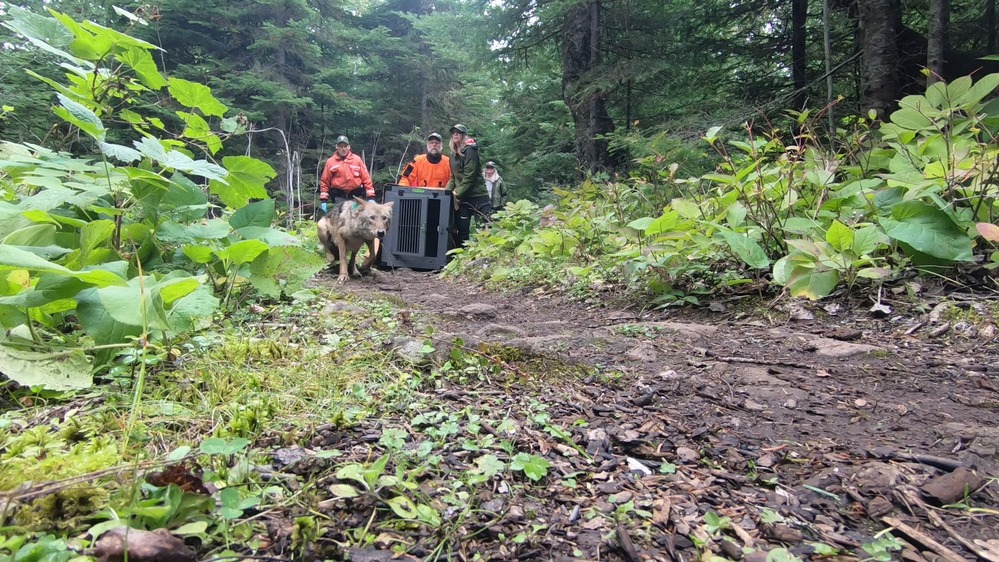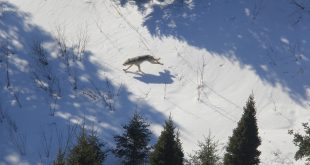As received from the Isle Royale National Park:
The Isle Royale fall wolf translocation project concluded on September 13 after successfully moving three wolves from Michigan’s Upper Peninsula to the park. The new wolves, two males and one female, bolstered the total island wolf population to 17, which now includes nine males and eight females.

A fourth wolf was moved to the park on September 13, but its collar sent out a mortality signal over the weekend. Biologists from the National Park Service (NPS) and State University of New York – College of Environmental Sciences and Forestry (SUNY-ESF) located the wolf and confirmed the mortality late on Tuesday afternoon. The carcass of the wolf will be sent to the USGS National Wildlife Health Center in Madison, Wisconsin, for necropsy. “Capture, anesthesia, and translocation are stressful events for wolves and the impact of that stress on each individual wolf is unknown,” Isle Royale Park Superintendent Phyllis Green noted. “There is a field examination, however underlying health conditions of wolves prior to their capture are difficult to determine. The analysis of the samples collected during the examination and the necropsy may reveal more information about the cause of death, which will inform future transfers.”
The NPS worked closely with the Michigan Department of Natural Resources (DNR), US Department of Agriculture APHIS – Wildlife Services (APHIS – Wildlife Services), and SUNY-ESF on the project. From September 5 – 13, seven wolves were captured; three of those not meeting translocation criteria were immediately released. The four adults were examined, documented, tagged and fitted with tracking collars before being flown to the park on a US Fish and Wildlife Service airplane.
“Adding genetics from Michigan wolves was a key piece of the puzzle to provide the best opportunity for genetic diversity that supports the sustainability of the introduced population. The Michigan DNR, APHIS – Wildlife Services, and SUNY-ESF did an outstanding job, given the weather,” Green said. “Our focus now will be on broad population goals and the opportunity these Michigan wolves represent. We will continue to learn what we can and track how the wolves integrate into the island landscape.”
The three to five year effort to establish 20 -30 wolves on Isle Royale is being completed in order to restore predation as a key part of the island ecosystem. Researchers involved in the planning effort recommended this number of wolves from the Great Lakes region. Additionally, they recommended an equal number of males and females in order to establish genetic variability in the new population. The NPS and its partners will monitor the wolf population to determine evidence of social organization, reproduction and predation.
 Keweenaw Report Your Source for Local News and Sports
Keweenaw Report Your Source for Local News and Sports





